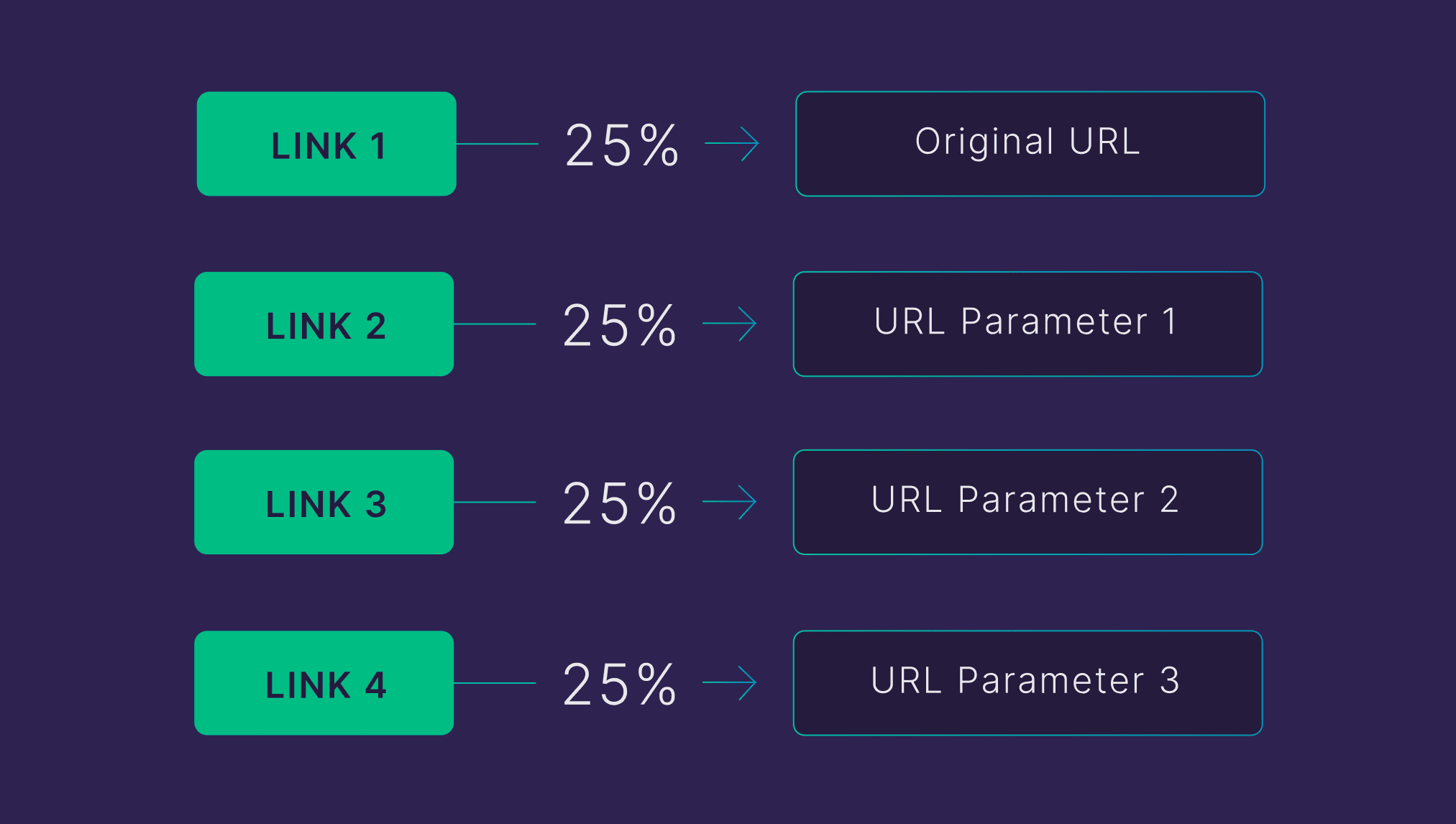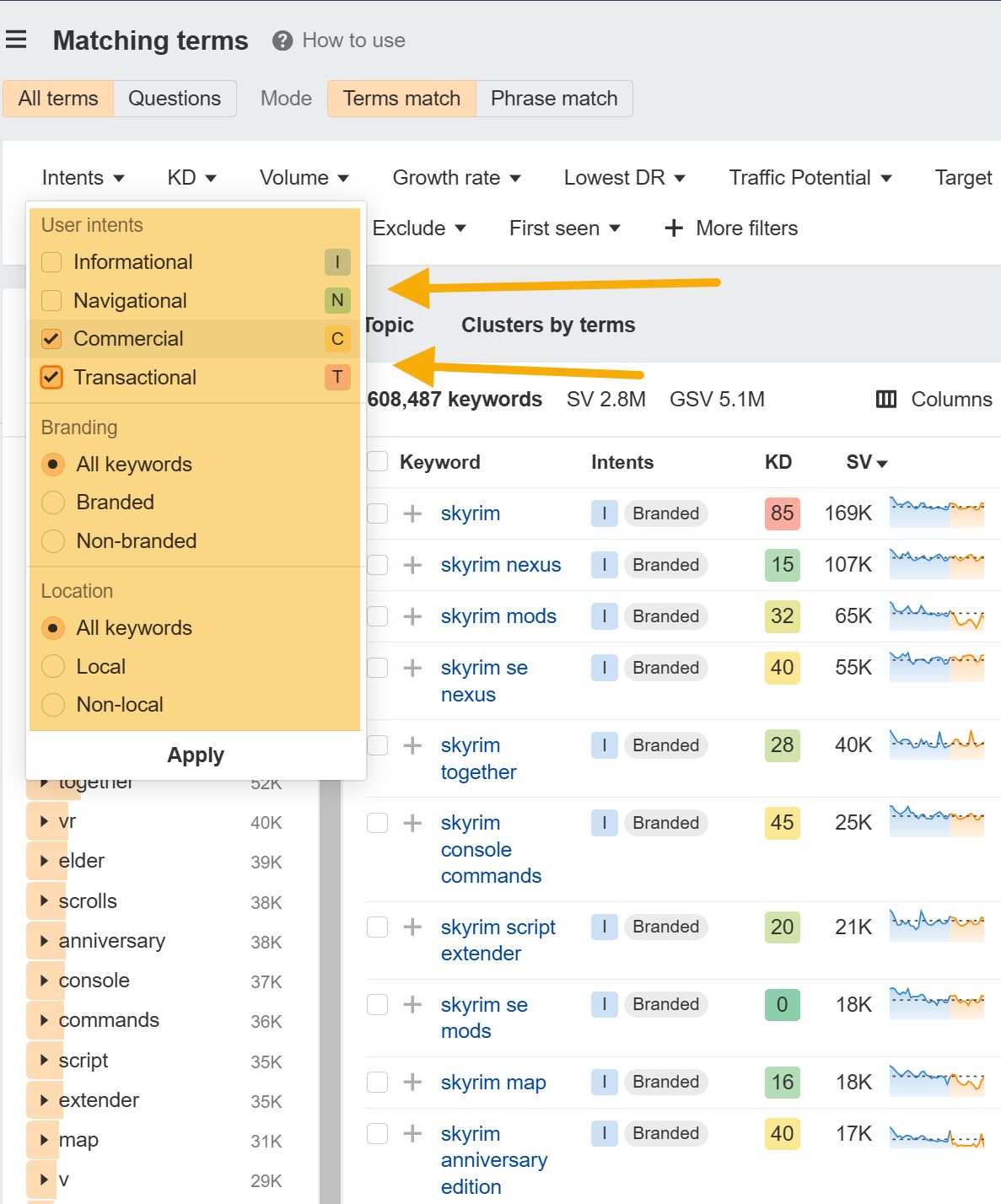URL parameters are strings of text added to a URL that modify website content and functionality. Or collect data on customer behavior. You can identify URL parameters as text strings following a “?” in a website’s URL.
Here’s an example that shows how URL parameters tailor the user experience:
robojan.gumroad.com/l/CFmodeling?layout=discover&recommended_by=staff_picks
The example URL consists of the following elements:
- Base URL
- ? (Start of URL parameters)
- URL parameters
In this URL, there are two parameters:
- layout=discover: Specifies the page layout to use, which is the discover layout
- recommended_by=staff_picks: Indicates how the user discovered the page, with “staff_picks” being the recommendation source
But the big question is:
Why should this matter to you?
That’s what we’ll cover in this post, including:
- How URL parameters affect marketing and SEO
- Google’s perspective on URL parameters
- Tips to avoid common issues with URL parameters
How Do URL Parameters Work?
URL parameters change a page’s content or behavior without the need for a separate URL for each variation.
When a user visits a URL with parameters, the web server or application reads these parameters and adjusts the page’s content—without creating many separate pages.
If you work in digital marketing or website development, you’ll inevitably run into URL parameters.
So, let’s look at how they work.
Structure and Functionality
URL parameters always include key-value pairs formatted as “key=value.”
- The “key” is what you want to adjust or track (e.g., utm_source, language)
- The “value” defines the key (e.g., fb, en_US )
Take, for example, this URL from a Facebook ad that tracks visitor interactions:
eu.huel.com/products/huel-black-edition?utm_source=fb&utm_medium=cpc&utm_campaign=ROE_ACQ_PRO_PURCHASES_7D-CLICK_JJ24_ASC
Here’s a breakdown of its URL parameters using the key-value structure:
- utm_source=fb: “utm_source” is the key, denoting the origin of the website traffic. The “fb” part shows that the traffic is coming from Facebook
- utm_medium=cpc: “utm_medium” is the key, which, in this case, stands for traffic medium, while “cpc” indicates the medium as cost-per-click (i.e., advertising)
- utm_campaign: “utm_campaign” is the key, which stands for the campaign name, while ”ROE_ACQ_PRO_PURCHASES_7D-CLICK_JJ24_ASC” is the name of the campaign.
Types of URL Parameters
There are two types of URL parameters: active and passive.
Active Parameters
Active parameters change the content or functionality of a webpage dynamically to suit the user’s needs.
Here’s an example:
elcorteingles.com/en/electronics/search/?s=google+pixel+buds+pro
The parameter “?s=google+pixel+buds+pro” controls the site’s search functionality. And pulls up pages related to the search phrase. In this case “Google Pixel Buds Pro.”
Use cases of active parameters
Active parameters serve various purposes. Here are three key uses:
1. Modify webpage behavior or appearance
Active parameters can change how web page elements behave or look. This optimizes the user experience by adjusting the page to meet user-defined settings.
For example, switching to Google’s dark theme activates this URL parameter:
https://www.google.com/?pcccc=1
2. Personalize and customize content
Active parameters tailor the content displayed to users, aligning it with their preferences or past behavior for a more personalized experience.
For example, searching for accommodation on the AirBnB website while using filters activates the URL parameter specific to the filters you choose.
https://www.airbnb.com/rooms/46050063?adults=2&category_tag=Tag%3A5348&enable_m3_private_room=true&photo_id=1160550891&search_mode=flex_destinations_search&check_in=2024-03-17&check_out=2024-03-22&source_impression_id=p3_1710343718_yhRYPkxp8vEcKmFz&previous_page_section_name=1000&federated_search_id=7dfc3a2c-d135-4548-8220-d9272077cd68&guests=3&children=1
3. Support dynamic content creation
Active parameters dynamically generate content based on user input, preferences, or contextual information.
For example, specifying the hourly weather forecast on AccuWeather activates this URL parameter:
accuweather.com/en/es/madrid/308526/hourly-weather-forecast/308526?hour=1710352800
Passive Parameters
Passive parameters are used mainly for tracking and analytics. They don’t change a web page’s content or functionality.
Here’s an example from a ClickUp ad:
clickup.com/compare/monday-vs-clickup?utm_source=google&utm_medium=cpc&utm_campaign=trial_all-devices
In this example, the parameters following the “?” are passive. They collect data without modifying the site’s look or functionality.
Servers can also create them to organize content better. Plus, marketing and analytics tools can add special tracking parameters to URLs to make it easier to see how specific campaigns are performing.
Why Are URL Parameters Important for Marketers?
Beyond the technical role of URL parameters in building dynamic websites, they also help you analyze and refine your marketing campaigns.
You can use them to:
- Identify which channels drive traffic to your website
- Understand how visitors interact with your website
- Tailor content and user experiences based on visitor behavior
- Evaluate the performance and ROI of your marketing efforts
- Gauge the effectiveness of your influencer marketing campaigns
How Google Deals with URL Parameters
Google understands and reads URL parameters.
Crawlers can crawl them. And Google can index them.
In fact, it’s become good at identifying which parameters matter. And which don’t.
But from what we’ve seen, this process isn’t perfect.
So, you must carefully manage your URL parameters to avoid possible complications.
When Do URL Parameters Become an SEO Issue?
URL parameters become an SEO issue in several scenarios:
- Duplicate content
- Crawl budget waste
- Link equity distribution
- URL structure and usability issues
Let’s look at each of these in detail.
Duplicate Content Issues
When you use URL parameters to sort or filter items on a site, you may end up with multiple URLs that display nearly identical content.
This can cause duplicate content issues. And confuse search engines.
As a result, they may struggle to identify which version of a page to prioritize in search results.
Crawl Budget Problems
With over a billion websites live on the Internet, there’s a limit on the amount of time Google’s web crawler can spend on crawling any single website. This amount of time is referred to as the crawl budget.
When a website has many URL parameter variations, it can result in crawl budget issues.
Essentially, the crawler might spend too much time crawling similar pages, possibly ignoring other important content on the website. This is mainly an issue for websites with thousands of pages (or more).

Link Equity Dilution
Links channel SEO value from one page to another.
This SEO value, known as link equity (or link juice), can help improve site ranking.
However, when links point to various versions of the same URL, the link equity gets divided among those versions.
As a result, the full link equity potential is diluted because search engines see each URL as separate. Rather than recognizing them as pointing to the same content.

URLs That Are Not SEO-Friendly
URLs with too many extra parameters can be fairly long and look akward. Google’s URL structure best practices suggest keeping URL structures simple and easy to read—so it’s best to stick to that advice.
Long URLs also don’t appear truncated in search results, which can impact click-through rates.

Best Practices for URL Parameters
To make sure that URL parameters don’t negatively impact your web rankings or the user experience, follow these best practices:
1. Use Canonical Tags
Help search engines identify the original version of a webpage by using canonical tags.
Look at this Inboxally URL from a Reddit ad with parameters added to the base URL:
inboxally.com/?rdt_cid=4345946952391789066&utm_campaign=getoutofspam&utm_medium=cpc&utm_source=reddit
Now, take a look at the page’s HTML code. You’ll see it uses canonical tags:

These tags point search engines to the original version of the page, so they’ll index that one and ignore other variations.
2. Limit the Use of URL Parameters
Keep your URLs clean and simple. Avoid using URL parameters unless necessary.
For example:
It’s possible to use URL parameters to change the language of a webpage like so:
https://www.yourwebsite.com?lang=en-us
But it’s not recommended because there’s a better way to do it.
Instead of using URL parameters, it’s better to use subdomains. Here’s how Semrush does it:
https://es.semrush.com/
You can also use subdirectories, like Slack:
https://slack.com/intl/de-de
3. Use Meta Tags and Robots.txt Wisely
Use meta tags to control what search engines index. You can use the “noindex” tag for this.
In addition, the robots.txt file manages which pages on your website search engines are allowed to crawl. Use it to block search engines from accessing URLs with unnecessary parameters.
The robots.txt file is so important that even Google uses it to stop its crawler from crawling non-essential pages.

4. Use User-Friendly URLs
Prioritize clear, descriptive, and short URLs. Avoid using lengthy and complex ones like:
https://www.yourwebsite.com/products?category=laptops&id=1234
Instead, replace them with simple, path-based URLs such as:
https://www.yourwebsite.com/laptops/dell-latitude-550
5. Monitor and Audit Your Website Regularly
Use tools like Semrush’s Semrush – Site Audit to conduct regular website audits. These can help you spot any issues that URL parameters might cause.
Here’s how to get started with the Site Audit tool:
Enter your domain and click the “Start Audit” button.

You’re able to modify a number of settings for the audit, including crawl scope, specific URLs to include or exclude from the audit, crawl source, and more.
In most cases, you can stick with the default settings and click on “Start Site Audit.”

Once the audit is complete, you’ll be able to see a detailed report outlining all the discovered issues.

From here, click on the “Issues” tab.

Click on the linked part of an issue.

This will take you to a page with a list of all the pages with that specific issue.
Click on the “Why and how to fix it” link to learn more about the issue and how to address it.

6. Optimize Your Sitemap
Use your sitemap to guide how search engines should navigate your site.
Include only the canonical URLs, which are the original versions of the pages you want indexed.
Here’s how to do this:
Start by reviewing your current sitemap to make sure it contains only the canonical URLs.
Next, remove any unnecessary URLs that don’t significantly change the content, such as tracking parameters, as well as any pages you intentionally want to keep hidden from search engines.
Finally, submit your updated sitemap through Google Search Console.
7. Implement URL Rewriting
URL rewriting involves automatically converting complex URLs into simpler, more understandable formats.
This server-side process helps with SEO and user experience by making URLs more descriptive and concise.
For example, you might change a URL from:
www.yourwebsite.com/product.php?id=123
To a more readable version like:
www.yourwebsite.com/electronics/smartphone-model-x
With URL rewriting, visitors will see the simple version. But the server still recognizes it as the original, complex URL.

Are URL Parameters Harming Your Website’s Rankings?
URL parameters can inadvertently create duplicate content—which may harm your site’s rankings.
The best way to know if this is the case?
Run a website audit.
Use our 15-point checklist and SEO audit template to guide you through this process.
It’s time to give your website a health check to keep your site in top condition for Google and other search engines.
Content Copyrights Belong to The Author. All Rights Reserved.
We're A Dallas Digital Marketing Agency That is Experts At Social Media Marketing, Website Design and Emarketing and Promotion.




